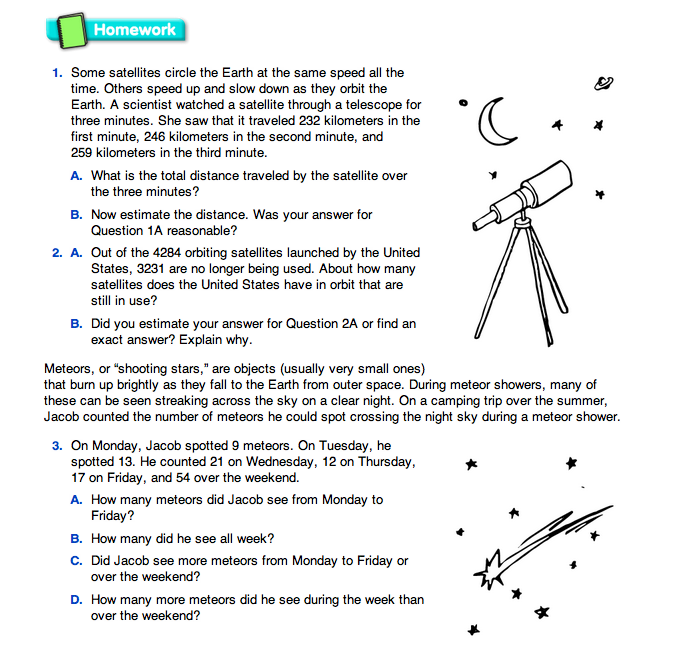Adding and Subtracting in Space
Est. Class Sessions: 2–3Homework and Practice
- Assign the Homework section in the Student Guide.
- Assign DPP Items U–X. DPP Bit U provides practice with using mental counting strategies to subtract. Task V provides more base-ten hopper practice.
- Challenge X, a Problem of the Week, provides computation practice in the context of money.
Math Facts. DPP Bit W develops number sense and provides practice with math facts in the context of number riddles.
Remind students to study the multiplication facts for the 2s, 3s, and 9s using the Triangle Flash Cards.
Student Activity Book:
Master:














